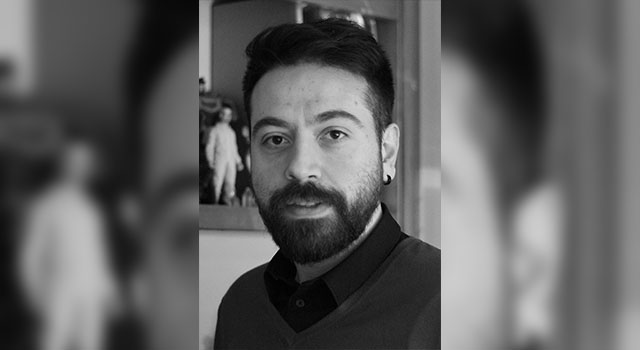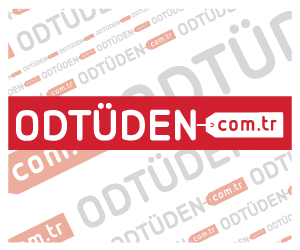
Assoc. Prof. Görkem Günbaş from METU Department of Chemistry, was entitled to receive support with the “Overcoming the Barriers of Brain Cancer Treatment: Targeted and Fully NIR Absorbing Photodynamic Therapy Agents with Extremely Low Molecular Weights and Controlled Lipophilicity” (INFRADYNAMICS) project given within the scope of “ERC Starting Grant 2019” call. The project, which focuses on brain cancer treatment, is the third ERC project that is eligible to be supported in our university as well as the state universities in our country. At the same time, this project also has the distinction of being the first project in the field of chemistry in Turkey.
Project Abstract: Cancer is the second leading cause of death worldwide, accounting for a total of 8.8 million deaths in 2015. Research efforts have resulted in significant increase in 5-year survival rates for some cancer types, however this is not the case in brain cancer. Three fundamental issues are at the core of this reality: 1) High percentage of inoperable brain tumours; 2) Limited number of drugs that can pass through the blood-brain barrier and 3) Absence of effective targeted brain cancer therapies. Photodynamic therapy (PDT) has the potential to be a selective, effective and non-invasive alternative to current treatments, however to date it is only applicable to a small group of cancers. Realization of non-toxic, water-soluble and photostable PDT agents, with strong near infrared absorption for deep tissue penetration, that also realizes high singlet oxygen generation efficiency and effective targeting, is the key for widespread use of PDT for majority of cancers. For brain cancer specifically, low molecular weights (Mws) and controlled lipophilicity is needed as well. The ultimate aim of INFRADYNAMICS is to create and validate the first series of advanced PDT agents that meet all these requirements and to demonstrate that a significant impact on brain cancer survival rates could be achieved. First, a series of advanced fluorophores that combine the two contradicting entities – absorption in NIR region (>700 nm) and low Mws – will be realized using novel design approaches which also allow a synthetically-viable pathway to tune lipophilicity. Then, appropriate heavy atom modifications for sensitization will be pursued. Most importantly, these sensitizers will be decorated with known and novel handles towards specific targeting of glioblastoma cells to attain the final PDT agents. Photophysical properties will be investigated, and finally, in-vitro and in-vivo studies will be performed to determine the effectiveness of our agents on brain cancer treatment.
State of the Art: Imaging and removal of brain tumours are one of the long-standing challenges of brain cancer treatment, with 5-year patient survival rates as low as 35%. Even though survival rates are improving significantly for certain types of cancers, such as prostate and breast cancers, the 5-year survival rate of brain cancer hardly improved in the last two decades. Three fundamental issues are at the core of this reality:
1) A significant portion of brain tumours are inoperable because they are close to the parts of the brain that are critical for survival – Despite immense advances in the last decade in the development of precise methods for tumour removal, brain tumours stand to be a major challenge.
2) Both imaging agents and drugs for treatment need to pass through the blood-brain barrier (BBB),
which is one of the most controlled gateways in the human body – The molecular weight (Mw) and lipophilicity of the drugs play a major role in passing through the BBB. Even though there are outliers for this cut-off, it is clear that the lower the Mw, the higher the chance of a drug to penetrate the BBB.
3) There are currently no effective targeted conventional brain cancer therapies – There are 16 targeted therapies for lung cancer, 15 for breast cancer and 7 for colon cancer, but only 1 for malignant brain tumours (Avastin). Unfortunately, there is no evidence that Avastin extends survival more effectively than chemotherapy and radiation.
About Assoc. Prof. Görkem Günbaş
He completed his undergraduate and graduate studies in METU Chemistry Department.He did ground-breaking work in electrochromic conductive polymers during his master’s degree, and produced 20 international scientific articles including work published in “Advanced Materials”, one of the leading journals of materials science. During his PhD studies at the University of California, Davis, he has published articles in the leading chemistry journals such as “Nature Chemistry” and “Journal of the American Chemical Society”, with his fundamental work concentrating on tetravalent oxygen and extremely long carbon oxygen bonds. Dr. Günbaş also had the opportunity to work one year at the University of California, Berkeley, world-leading institution in chemical sciences. Here, working on the development of biofuels, Günbaş has co-authored 5 scientific articles and 3 American patents.
As of 2014, Dr. Günbaş started to work in METU Chemistry Department, and in 2018, he was appointed as an associate professor. He has established a large group consisting of one Post-doc, eight doctorate, seven master and six undergraduate students performing research in a number of different fields. During this period, he produced eight METU-addressed publications including the journals “Scientific Reports” and “Journal of Materials Chemistry C”. Dr. Günbaş has 39 scientific articles in total and these articles have received over 1800 citations (Google Scholar).







